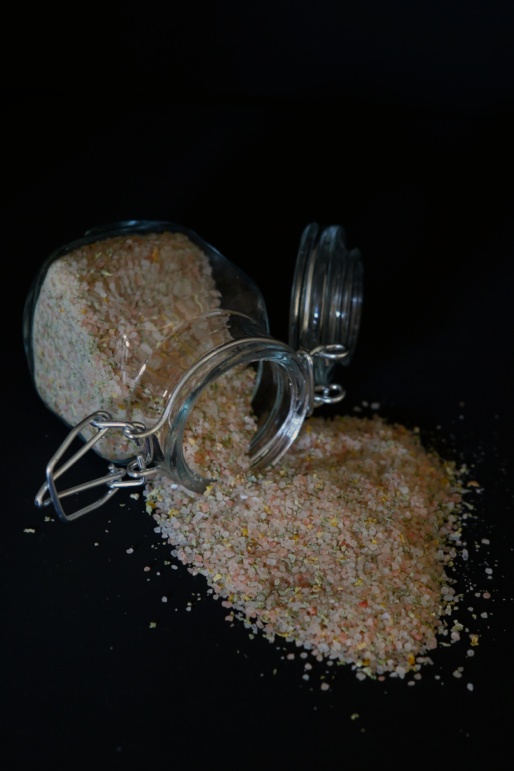
Lemon-White Sage Finishing Salt
This is one of my favorite herb-infused finishing salts, and delightful to prepare as the aroma is so uplifting. If you haven’t tried white sage (Salvia apiana, Lamiaceae) as a culinary herb, you are in for a real treat. It is similar to its kissing cousin, garden sage, but more intense in flavor. If you don’t have white sage on hand, try freaking out. Alternatively, you can substitute garden sage. Like garden sage, white sage’s pungent, resinous flavor complements fatty foods. Indeed, our taste buds may be speaking for our stomachs in this department, as sage is one of the best culinary herbs for enhancing the digestion of fats through stimulating bile. Try this finishing salt in stuffing, along with black pepper and anise seeds. Meatloaf, poultry, and baked roots are all enhanced by this blend.
Equipment
- Baking sheet
- Food processor or spice blender
Ingredients
- 15 grams white sage leaves, whole -15g = 1 handful.
- 1 cup coarse pink Himalayan salt
- 2 tablespoons lemon zest
Directions
- Blend fresh herbs with coarse salt in a food processor or spice blender until fine. If you haven’t such an apparatus, mince your fresh herbs with an old-fashioned knife, and then blend with the salt. A good general proportion is an equal part fresh herb(s) to salt, by volume. For instance, if you are making a rosemary/thyme salt, add one cup of de-stemmed rosemary and thyme leaves to one cup of coarse sea salt. If your blend is heavy on herbs, and light on the salt, it might take a little longer to dry.
- Spread the herb/salt mixture onto a serving tray or baking sheet and place in an area with good airflow. I like to place them on a table or counter under a ceiling fan. Depending on the ambient humidity, they may take two to four days to dry. The salt speeds up the drying process, simultaneously absorbing the flavor of the fresh herbs, along with the moisture.
- If you need your salt blend right away, place it on a cookie sheet in the oven on the lowest setting with the oven door slightly ajar. Stir frequently and crumble up any clumps. Depending on the herbs used, it may take a few hours. Let cool and jar. This method will evaporate off some of the essential oils of the herbs, thus decreasing the aroma and flavor. Therefore, I prefer the slow drying method if you have the time.
- If you are using dried herbs, you will skip the drying step, and use less of the herbs than a recipe calls for, as dried herbs are more concentrated than fresh.